
Ludwigsvorstadt-Isarvorstadt: Munich's Vibrant Heartbeat
Discover Ludwigsvorstadt-Isarvorstadt: Munich's lively hub, home to Oktoberfest, vibrant nightlife, and a rich blend of culture, history, and modern attractions.
Ludwigsvorstadt-Isarvorstadt is a dynamic neighborhood in Munich that offers a diverse mix of culture, history, and modernity. This area is renowned for its lively atmosphere, making it a perfect destination for tourists seeking both adventure and relaxation. The neighborhood is home to the famous Theresienwiese, the site of the annual Oktoberfest, which attracts millions of visitors from around the world. Even outside of Oktoberfest, the grounds host various events and festivals throughout the year, providing a festive ambiance for all visitors. Walking through the streets, you'll find an array of eclectic shops, cozy cafes, and traditional Bavarian restaurants. The Gärtnerplatzviertel area is particularly known for its vibrant nightlife, with numerous bars and clubs that stay open until the early hours. For those interested in history and architecture, the Deutsches Museum, located on an island in the Isar River, offers fascinating exhibits on science and technology. The neighborhood is also a hotspot for art and culture, with various galleries, theaters, and live music venues. The cultural diversity is reflected in the cuisine available, ranging from traditional Bavarian dishes to international flavors. Whether you're looking to explore Munich's rich history or simply enjoy its modern offerings, Ludwigsvorstadt-Isarvorstadt has something for everyone.
Local tips in Ludwigsvorstadt-Isarvorstadt
- Visit during Oktoberfest to experience Munich's most famous festival, but book accommodations well in advance.
- Explore Gärtnerplatzviertel for vibrant nightlife, with a variety of bars, clubs, and live music venues.
- Take a leisurely stroll along the Isar River and enjoy the scenic views and peaceful atmosphere.
- Don't miss the Deutsches Museum for an educational experience focused on science and technology.
- Sample local Bavarian cuisine at traditional restaurants, but also try the international offerings for a diverse culinary experience.
Ludwigsvorstadt-Isarvorstadt: Munich's Vibrant Heartbeat
Ludwigsvorstadt-Isarvorstadt is a dynamic neighborhood in Munich that offers a diverse mix of culture, history, and modernity. This area is renowned for its lively atmosphere, making it a perfect destination for tourists seeking both adventure and relaxation. The neighborhood is home to the famous Theresienwiese, the site of the annual Oktoberfest, which attracts millions of visitors from around the world. Even outside of Oktoberfest, the grounds host various events and festivals throughout the year, providing a festive ambiance for all visitors. Walking through the streets, you'll find an array of eclectic shops, cozy cafes, and traditional Bavarian restaurants. The Gärtnerplatzviertel area is particularly known for its vibrant nightlife, with numerous bars and clubs that stay open until the early hours. For those interested in history and architecture, the Deutsches Museum, located on an island in the Isar River, offers fascinating exhibits on science and technology. The neighborhood is also a hotspot for art and culture, with various galleries, theaters, and live music venues. The cultural diversity is reflected in the cuisine available, ranging from traditional Bavarian dishes to international flavors. Whether you're looking to explore Munich's rich history or simply enjoy its modern offerings, Ludwigsvorstadt-Isarvorstadt has something for everyone.
Iconic landmarks you can’t miss
Munich Residenz
Explore the grandeur of Munich Residenz, a historical palace showcasing Bavaria's royal heritage through stunning architecture and exquisite art.
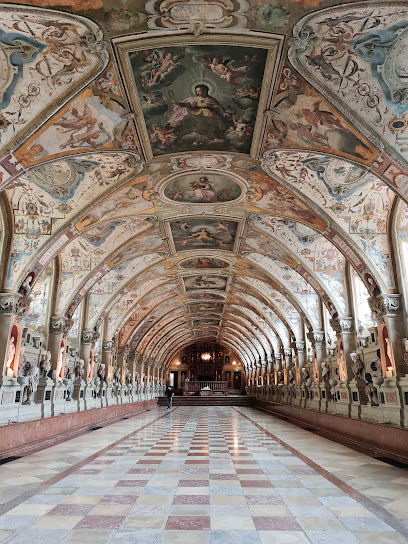
Isar Gate
Explore Isar Gate, a magnificent historical landmark in Munich that beautifully captures the essence of the city’s rich architectural heritage and cultural significance.
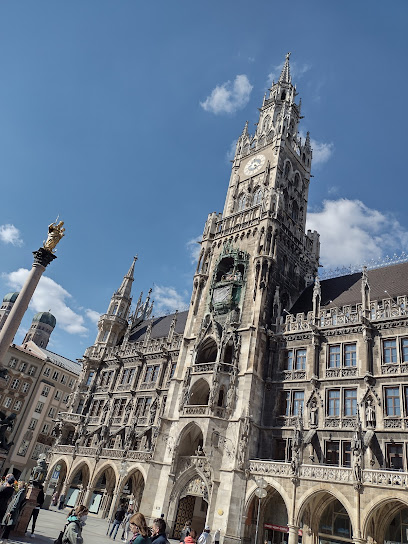
Königsplatz
Explore the grandeur of Königsplatz, Munich's historical landmark featuring stunning neoclassical architecture and rich cultural heritage.
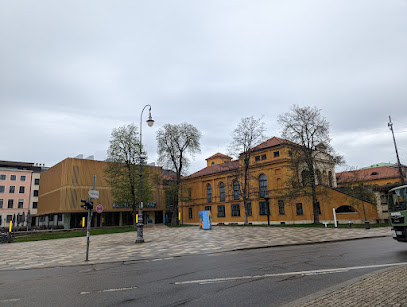
Gärtnerplatz
Experience the charm of Gärtnerplatz, a historic square in Munich that blends stunning architecture with vibrant local culture and delightful cafés.
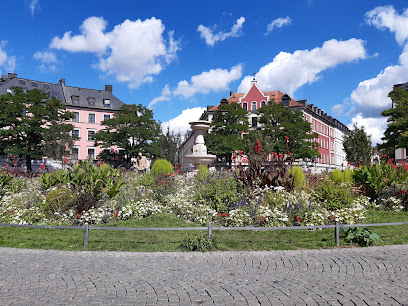
Karlstor
Discover the historic charm and architectural beauty of Karlstor, a captivating gateway to Munich's vibrant history and culture.
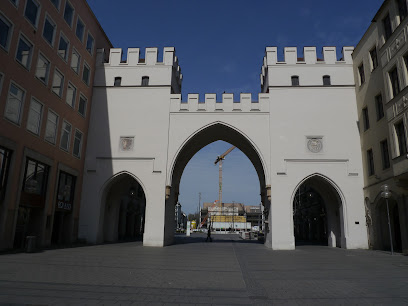
Ruhmeshalle
Explore the Ruhmeshalle in Munich, a stunning tribute to Bavarian history and culture, showcasing the legacy of its most influential figures.
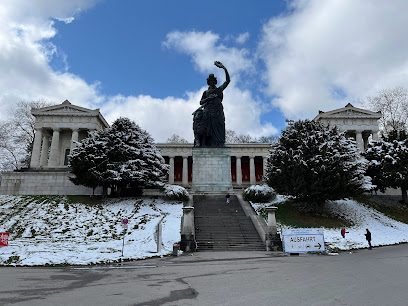
Bazargebäude
Explore the historical wonder of Bazargebäude, a captivating landmark in the heart of Munich that showcases the city's rich architectural heritage.
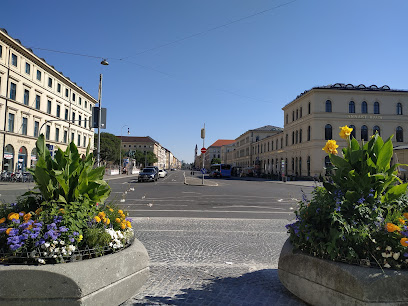
Steinwall an der Reichenbachbrücke
Explore the Steinwall at Reichenbachbrücke, a stunning blend of history and nature in the heart of Munich, perfect for serene escapes and unforgettable photos.

Leo von Klenze Denkmal
Explore the Leo von Klenze Denkmal in Munich, a stunning tribute to architectural excellence amidst the vibrant atmosphere of Gärtnerplatz.

Ochsenbrunnen
Explore the historic Ochsenbrunnen Fountain in Munich's vibrant Ludwigsvorstadt-Isarvorstadt district, a must-see for art and history lovers.
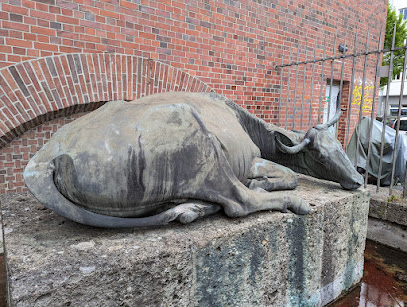
Unmissable attractions to see
English Garden
Experience the beauty and tranquility of the English Garden in Munich, where nature meets culture in a sprawling urban oasis.

Königsplatz
Discover the historical charm of Königsplatz, Munich's neoclassical square surrounded by art, culture, and architectural marvels.
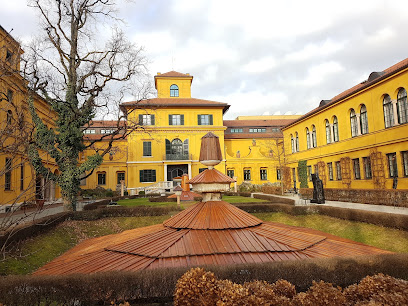
Rathaus-Glockenspiel
Discover the magic of Munich's Rathaus-Glockenspiel, a mesmerizing clock tower showcasing historical tales through enchanting musical performances.
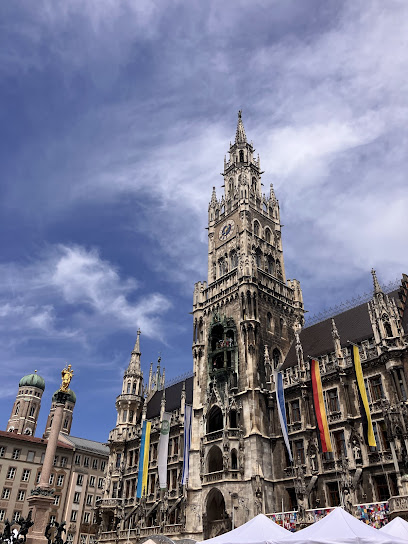
Toy Museum Munich
Explore the Toy Museum in Munich, where nostalgia meets history in a delightful showcase of toys from around the world.
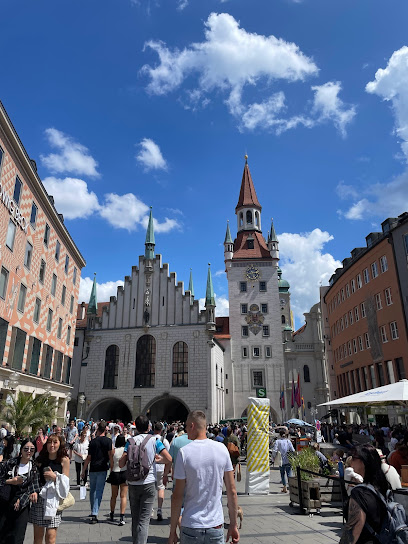
Lion's Tower
Explore the iconic Lion's Tower in Munich, a historic landmark that showcases stunning architecture and offers a glimpse into the city's vibrant past.
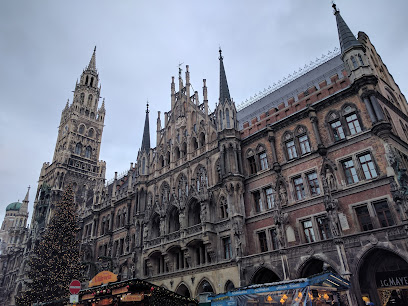
München Innenstadt | Munich City
Explore Munich Innenstadt, where history meets modernity in a vibrant city center filled with culture, shopping, and culinary delights.
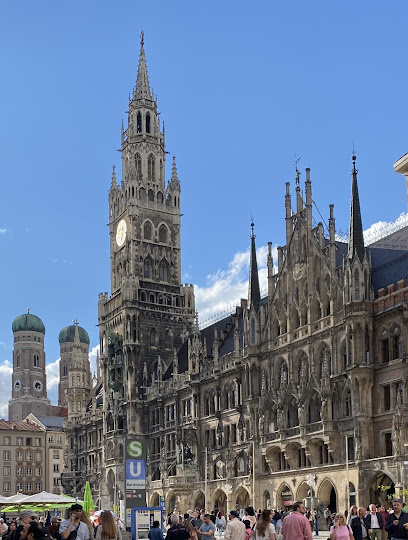
Essential places to dine
Augustiner Klosterwirt
Savor authentic Bavarian flavors at Augustiner Klosterwirt - Munich's beloved family-friendly dining destination.

Ratskeller München
Experience authentic Bavarian cuisine at Ratskeller München – where tradition meets taste in the heart of Munich.
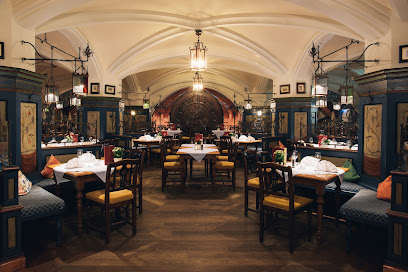
Andy's Krablergarten
Discover authentic Bavarian flavors at Andy's Krablergarten in Munich – a delightful restaurant offering traditional German dishes in a warm atmosphere.

Münchner Stubn
Discover the flavors of Bavaria at Münchner Stubn - a must-visit German restaurant in Munich known for its authentic dishes and inviting atmosphere.
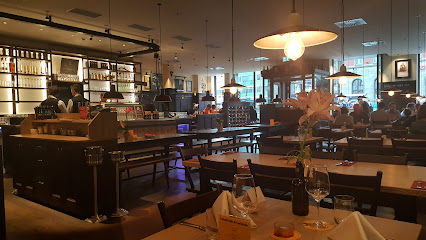
Augustiner Drei Mühlen
Discover the heart of Bavarian cuisine at Augustiner Drei Mühlen - where tradition meets flavor in the vibrant city of Munich.
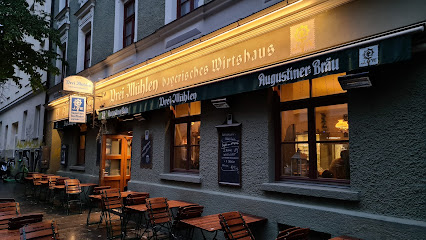
NENI München
Discover the vibrant fusion of Middle Eastern cuisine at NENI München - where every dish tells a story in the heart of Munich.
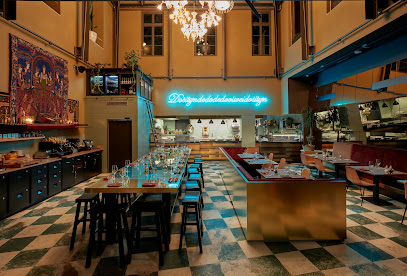
Das Bad
Experience the heart of Bavaria at Das Bad, where traditional flavors meet warm hospitality in the heart of Munich.
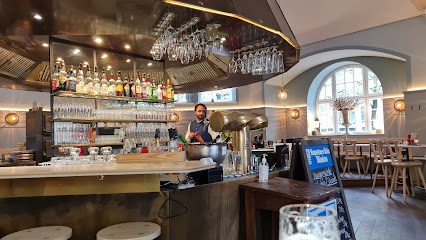
Wirtshaus Rechthaler Hof
Discover authentic Bavarian flavors at Wirtshaus Rechthaler Hof - a must-visit brewery restaurant in Munich's vibrant culinary scene.
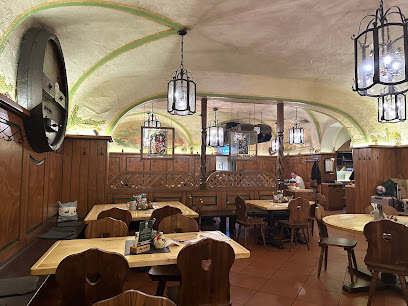
IRMI
Indulge in traditional Bavarian dishes at IRMI, where authentic flavors meet cozy ambiance in the heart of Munich.

Oléo Pazzo Restaurant/Bar
Discover the vibrant fusion of Mediterranean cuisine and cocktails at Oléo Pazzo Restaurant/Bar in Munich's lively Ludwigsvorstadt-Isarvorstadt district.
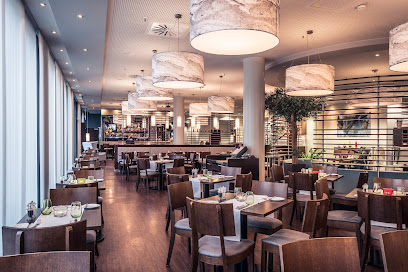
Markets, malls and hidden boutiques
LFDY Store München
Discover trendy apparel and unique styles at LFDY Store München, a fashion hotspot in the heart of Munich's vibrant Ludwigsvorstadt-Isarvorstadt district.
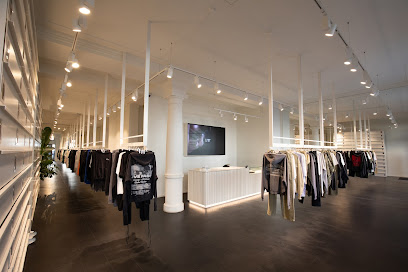
Elbenwald
Discover Elbenwald, Munich's enchanting gift shop filled with unique treasures from fantasy and pop culture, perfect for every enthusiast.

Picknweight - Vintage Store Kilo
Explore the charm of vintage shopping at Picknweight - Vintage Store Kilo, where unique fashion finds await in the heart of Munich.
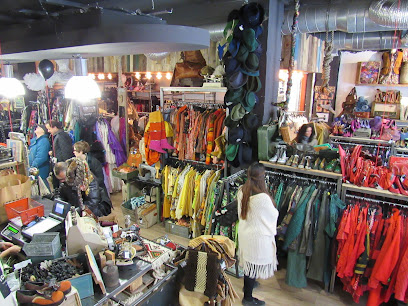
DearGoods
Explore the stylish offerings at DearGoods in Munich's Glockenbachviertel, where fashion meets sustainability in a chic boutique experience.
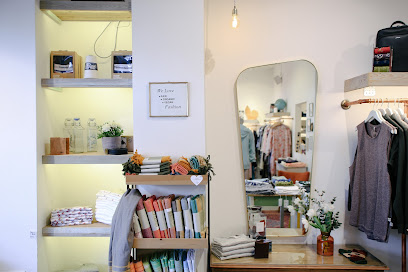
ABOUT GIVEN - Fair organic wear
Explore sustainable fashion at ABOUT GIVEN in Munich, where style meets ethical practices through fair organic wear.
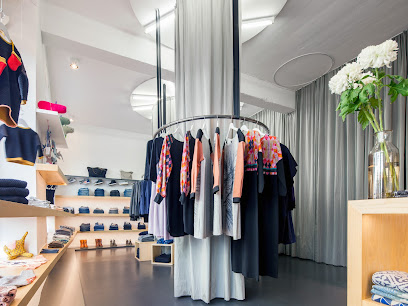
Exit Store - First and Second Hand
Explore the charm of Munich's Exit Store, where sustainability meets style in a delightful selection of second-hand clothing.

Munich souviner
Explore the heart of Bavaria with unique souvenirs and local delicacies at Munich Souvenir, a treasure trove for every traveler.
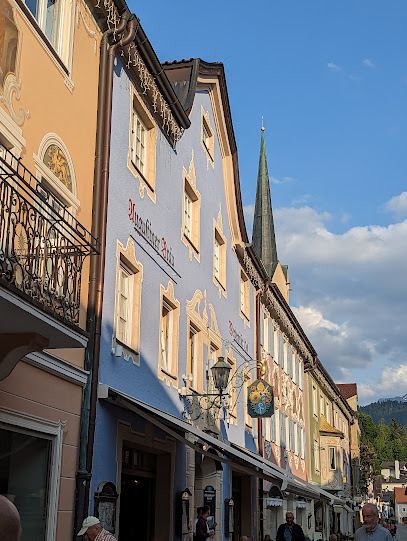
Nicer Laden
Explore Nicer Laden in Munich for unique home goods and local craftsmanship that capture the essence of Bavarian culture.

Fashion Shop
Explore a unique fashion shop in Munich's Altstadt-Lehel, where local style meets charming atmosphere, perfect for every tourist's wardrobe.
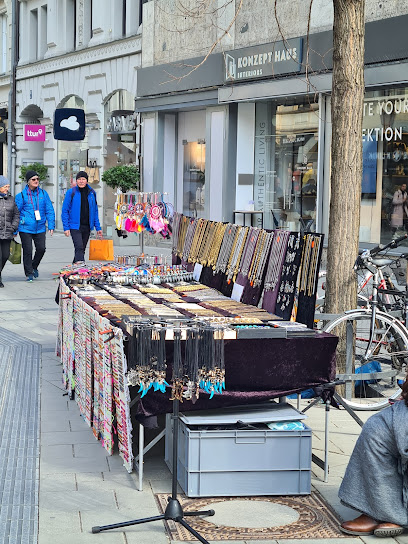
The Beyond Store
Explore a stunning selection of unique handbags at The Beyond Store, a must-visit shop in Munich's vibrant Ludwigsvorstadt-Isarvorstadt district.
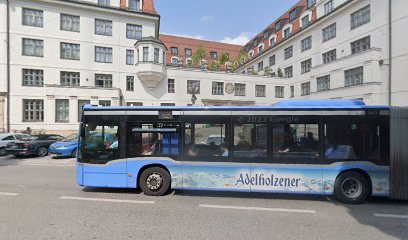
Essential bars & hidden hideouts
Zephyr Bar
Discover Zephyr Bar in Munich, where innovation meets tradition in crafted cocktails amidst a lively atmosphere perfect for nightlife enthusiasts.
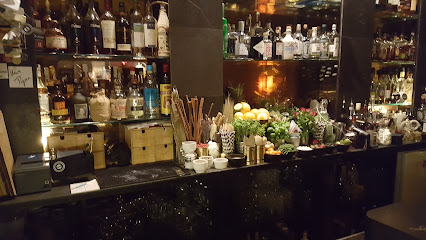
The Boilerman Bar - München
Discover the vibrant nightlife of Munich at The Boilerman Bar, where expertly crafted cocktails meet a welcoming atmosphere.
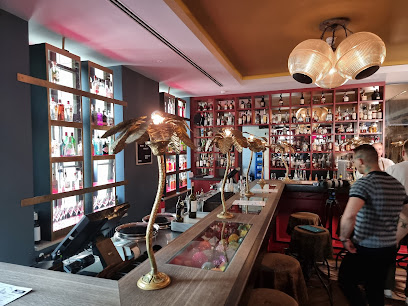
Auroom
Discover Auroom, an upscale cocktail bar in Munich, where innovative drinks and a stylish ambiance create the perfect night out.
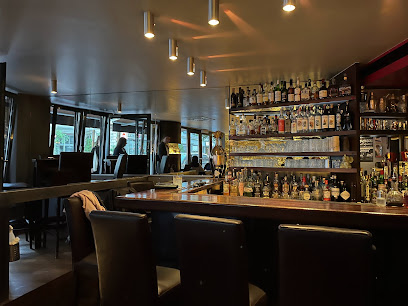
Zum Wolf
Discover Zum Wolf, a lively cocktail bar in Munich, blending classic American vibes with innovative mixology for an unforgettable nightlife experience.
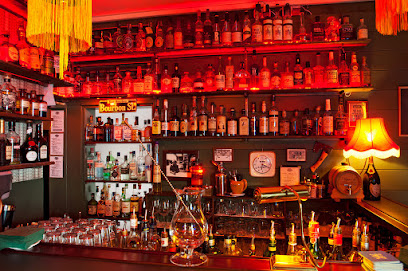
Cole & Porter Bar
Discover the perfect blend of cocktails and coffee at Cole & Porter Bar, Munich's lively social hub for locals and tourists alike.
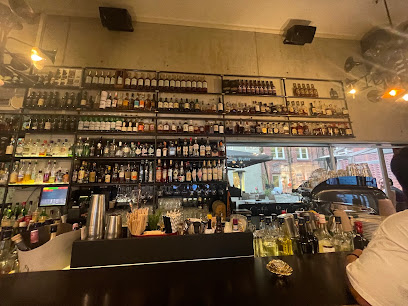
Bar Gabányi
Experience Munich's vibrant nightlife at Bar Gabányi, a chic bar known for its cocktails and lively atmosphere in the heart of the city.
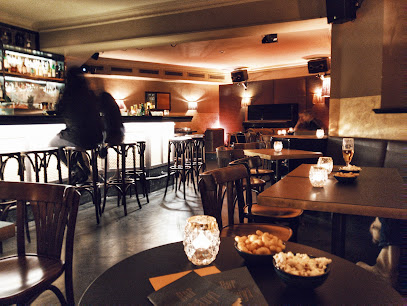
Kooks
Experience the vibrant nightlife at Kooks, Munich's lively bar offering a diverse drink menu and a welcoming atmosphere for all.
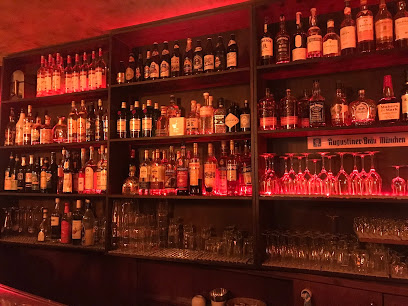
DIVE BAR MUNICH - München
Experience the authentic Munich nightlife at Dive Bar Munich, where eclectic drinks meet a vibrant atmosphere in Ludwigsvorstadt-Isarvorstadt.
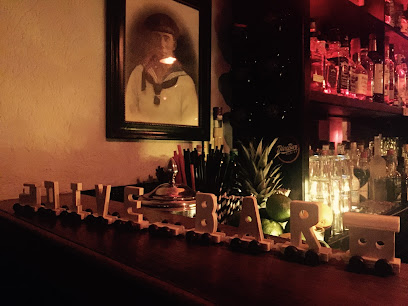
Goldamsel Bar
Experience the essence of Munich nightlife at Goldamsel Bar, a cocktail haven serving creative drinks in a stylish ambiance.
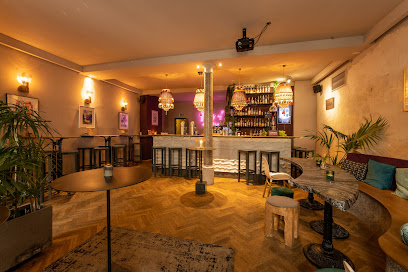
ISARBAR - Hotelbar & Lounge
Discover the chic ISARBAR at Sofitel Munich, offering unique cocktails, fine wines, and a vibrant atmosphere in the heart of the city.
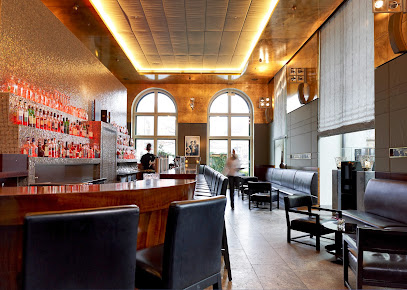
Local Phrases
-
- HelloHallo
[ha-lo] - GoodbyeAuf Wiedersehen
[owf vee-der-zay-en] - YesJa
[ya] - NoNein
[nine] - Please/You're welcomeBitte
[bih-tuh] - Thank youDanke
[dahn-kuh] - Excuse me/SorryEntschuldigung
[ent-shool-dee-gung] - How are you?Wie geht es dir?
[vee gate es deer] - Fine. And you?Gut. Und dir?
[goot oont deer] - Do you speak English?Sprechen Sie Englisch?
[shprek-en zee eng-lish] - I don't understandIch verstehe nicht
[ikh fer-shtay-uh nikt]
- HelloHallo
-
- I'd like to see the menu, pleaseIch möchte die Speisekarte sehen, bitte
[ikh merk-tuh dee shpy-zuh-kahr-tuh zay-en, bih-tuh] - I don't eat meatIch esse kein Fleisch
[ikh ess-uh kine fly-sh] - Cheers!Prost!
[prohst] - I would like to pay, pleaseIch möchte bitte bezahlen
[ikh merk-tuh bih-tuh be-tzal-en]
- I'd like to see the menu, pleaseIch möchte die Speisekarte sehen, bitte
-
- Help!Hilfe!
[hil-fuh] - Go away!Geh weg!
[gay vehg] - Call the Police!Rufen Sie die Polizei!
[roo-fen zee dee po-leet-sigh] - Call a doctor!Rufen Sie einen Arzt!
[roo-fen zee i-nen artsht] - I'm lostIch habe mich verirrt
[ikh hah-buh meesh feh-rirt] - I'm illIch bin krank
[ikh been krank]
- Help!Hilfe!
-
- I'd like to buy...Ich möchte kaufen...
[ikh merk-tuh kow-fen] - I'm just lookingIch schaue nur
[ikh show-uh noor] - How much is it?Wie viel kostet es?
[vee feel kaw-stet es] - That's too expensiveDas ist zu teuer
[dahs ist tsoy toy-er] - Can you lower the price?Können Sie den Preis senken?
[kern-en zee den prees zeng-ken]
- I'd like to buy...Ich möchte kaufen...
-
- What time is it?Wie spät ist es?
[vee shpet ist es] - It's one o'clockEs ist ein Uhr
[es ist iyn oor] - Half past (10)Halb (zehn)
[halb (tsayn)] - MorningMorgen
[mawr-gen] - AfternoonNachmittag
[nahk-mee-tahk] - EveningAbend
[ah-bent] - YesterdayGestern
[geh-stern] - TodayHeute
[hoi-tuh] - TomorrowMorgen
[mawr-gen] - 1Eins
[ines] - 2Zwei
[tsvai] - 3Drei
[dry] - 4Vier
[feer] - 5Fünf
[foonf] - 6Sechs
[zeks] - 7Sieben
[zee-ben] - 8Acht
[akht] - 9Neun
[noyn] - 10Zehn
[tsayn]
- What time is it?Wie spät ist es?
-
- Where's a/the...?Wo ist ein/der...?
[vo ist iyn/dehr] - What's the address?Was ist die Adresse?
[vahs ist dee ah-dreh-suh] - Can you show me (on the map)?Können Sie mir das zeigen (auf der Karte)?
[kern-en zee meer dahs tsy-gen (owf dehr kahr-tuh)] - When's the next (bus)?Wann kommt der nächste (Bus)?
[vahn kohmt dehr nahk-stuh (boos)] - A ticket (to ....)Eine Fahrkarte (nach ....)
[iyn-uh fahr-kahr-tuh (nahkh ....)]
- Where's a/the...?Wo ist ein/der...?
History of Ludwigsvorstadt-Isarvorstadt
-
Ludwigsvorstadt's history began in the early 19th century when it was established as a suburb of Munich. The neighbourhood was named after King Ludwig I of Bavaria, who envisioned it as a model urban development. Construction began in 1826, and the area quickly became a vibrant residential and commercial hub, reflecting the rapid industrialization and urbanization of Munich.
-
Isarvorstadt developed around the same time, alongside Ludwigsvorstadt. This area saw significant growth due to its proximity to the Isar River, which provided both a natural resource and a picturesque setting. By the mid-19th century, Isarvorstadt was becoming increasingly popular with the bourgeoisie, drawn to its beautiful parks and the cultural amenities that emerged during this period.
-
Throughout the 19th century, Ludwigsvorstadt-Isarvorstadt became known for its diverse population, including many immigrants from different parts of Europe. This influx of people contributed to a rich tapestry of cultures, traditions, and languages in the neighbourhood. The establishment of various cultural institutions, including theatres, galleries, and cafés, mirrored this diversity and made the area a vibrant cultural hub.
-
In the late 19th century, Ludwigsvorstadt became the center of Munich's Jewish community. The construction of the Munich Synagogue in 1887 marked a significant moment in the neighbourhood's history, symbolizing the growth of the Jewish population in the city. This community thrived until the rise of the Nazi regime in the 1930s, which led to tragic consequences for many residents.
-
Ludwigsvorstadt-Isarvorstadt suffered considerable damage during World War II, as many of its buildings were destroyed or severely damaged. Post-war reconstruction efforts focused on revitalizing the neighbourhood, leading to a mix of restored historical buildings and modern developments. The resilience of the community saw a return to vibrancy, with the area becoming a focal point for the arts and alternative culture in Munich.
-
Today, Ludwigsvorstadt-Isarvorstadt is celebrated for its cultural diversity and vibrant arts scene. It hosts numerous festivals, galleries, and theaters, making it a hotspot for local and international artists. The neighbourhood is also known for its lively nightlife, with a plethora of bars, clubs, and restaurants that reflect the eclectic mix of cultures that have shaped its identity over the years.
Ludwigsvorstadt-Isarvorstadt Essentials
-
Ludwigsvorstadt-Isarvorstadt is conveniently located in the heart of Munich and can be easily reached from other neighborhoods. The U-Bahn (subway) lines U1, U2, and U7 all serve the area with stops at Sendlinger Tor and Poccistraße. Trams 18 and 19 also run through the neighborhood, connecting you to central locations. If you are arriving by train, Munich Hauptbahnhof (main station) is just a short walk away.
-
The best way to navigate Ludwigsvorstadt-Isarvorstadt is through its efficient public transport system. The U-Bahn, trams, and buses provide extensive coverage throughout the area. Bicycle rentals are popular, and the flat terrain makes cycling an enjoyable option. Walking is also a great way to explore the charming streets and local attractions.
-
Ludwigsvorstadt-Isarvorstadt is generally safe for tourists. However, it is advisable to exercise caution, especially in the vicinity of the Hauptbahnhof area, which can attract petty crime such as pickpocketing. Avoid poorly lit streets at night and stay vigilant in crowded places.
-
In case of an emergency, dial 112 for fire and medical assistance, or 110 for police. Local hospitals and clinics are available, with the nearest emergency room located at Klinikum rechts der Isar. It’s recommended to have travel insurance that covers medical emergencies.
-
Fashion: Do wear comfortable shoes for walking, especially when exploring the area. Don't wear overly casual attire when dining in upscale restaurants. Religion: Do respect local customs and dress modestly when visiting religious sites, such as the St. Paul's Church. Public Transport: Do validate your ticket before boarding. Don't take up extra seats with bags during peak hours. Greetings: Do greet locals with a friendly 'Hallo' or 'Grüß Gott'. Don't forget to say 'Danke' (thank you) after receiving help or service. Eating & Drinking: Do try local specialties like Weisswurst and pretzels. Don't drink alcohol in public transport.
-
To experience Ludwigsvorstadt-Isarvorstadt like a local, visit the famous Viktualienmarkt for fresh produce and local delicacies. Attend a traditional beer garden, such as Augustiner-Keller, for an authentic Bavarian experience. Explore the vibrant street art scene, especially around the area of Giesing. Don’t hesitate to engage with locals; they are often eager to share their favorite spots and recommendations.
Nearby Cities to Ludwigsvorstadt-Isarvorstadt
-
Things To Do in Innsbruck
-
Things To Do in Kitzbühel
-
Things To Do in Salzburg
-
Things To Do in Zell am See
-
Things To Do in St. Anton am Arlberg
-
Things To Do in Nuremberg
-
Things To Do in Bregenz
-
Things To Do in Dornbirn
-
Things To Do in Bad Gastein
-
Things To Do in Hallstatt
-
Things To Do in Rothenburg ob der Tauber
-
Things To Do in Schellenberg
-
Things To Do in Ruggell
-
Things To Do in Mauren
-
Things To Do in Eschen










